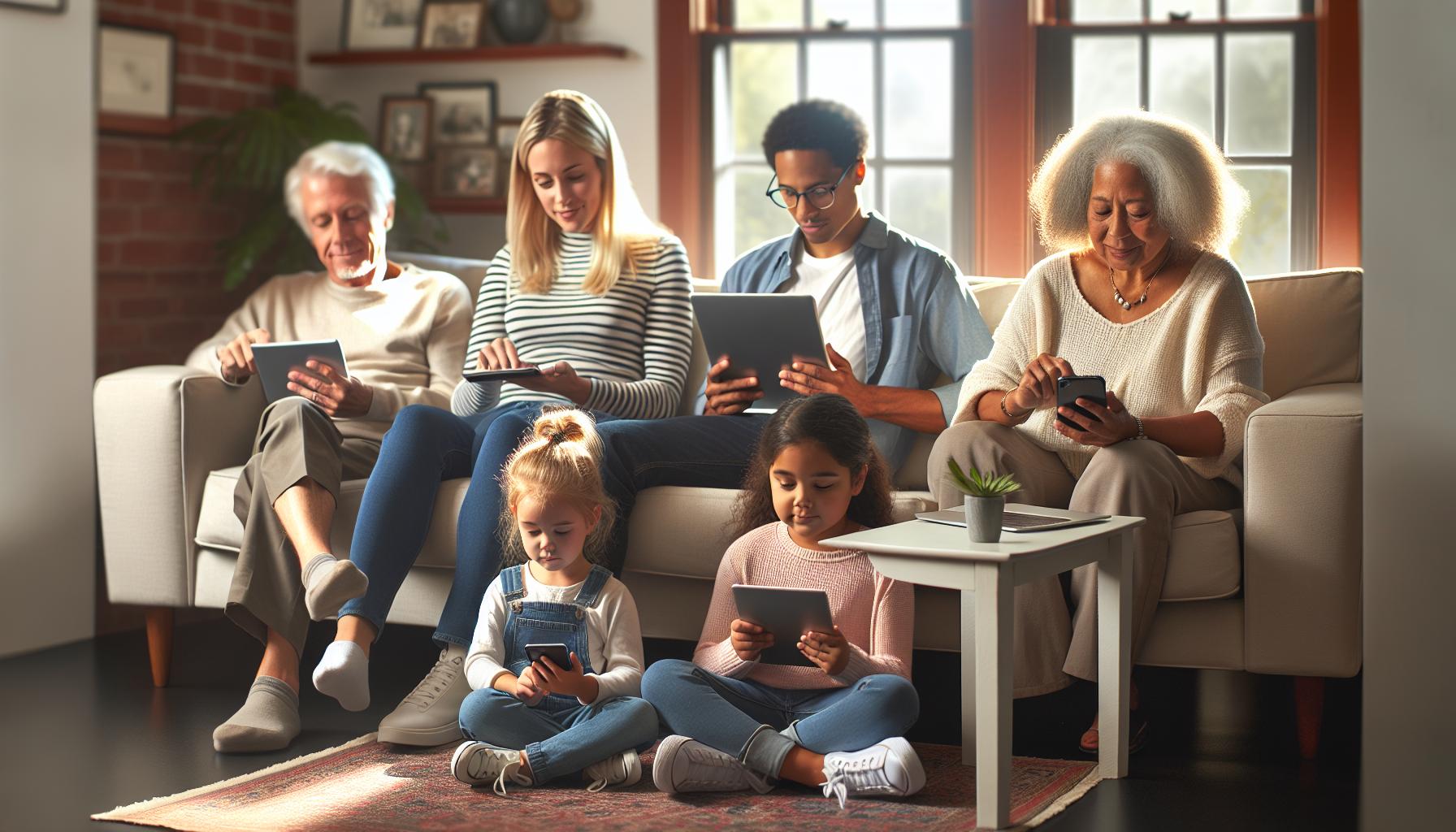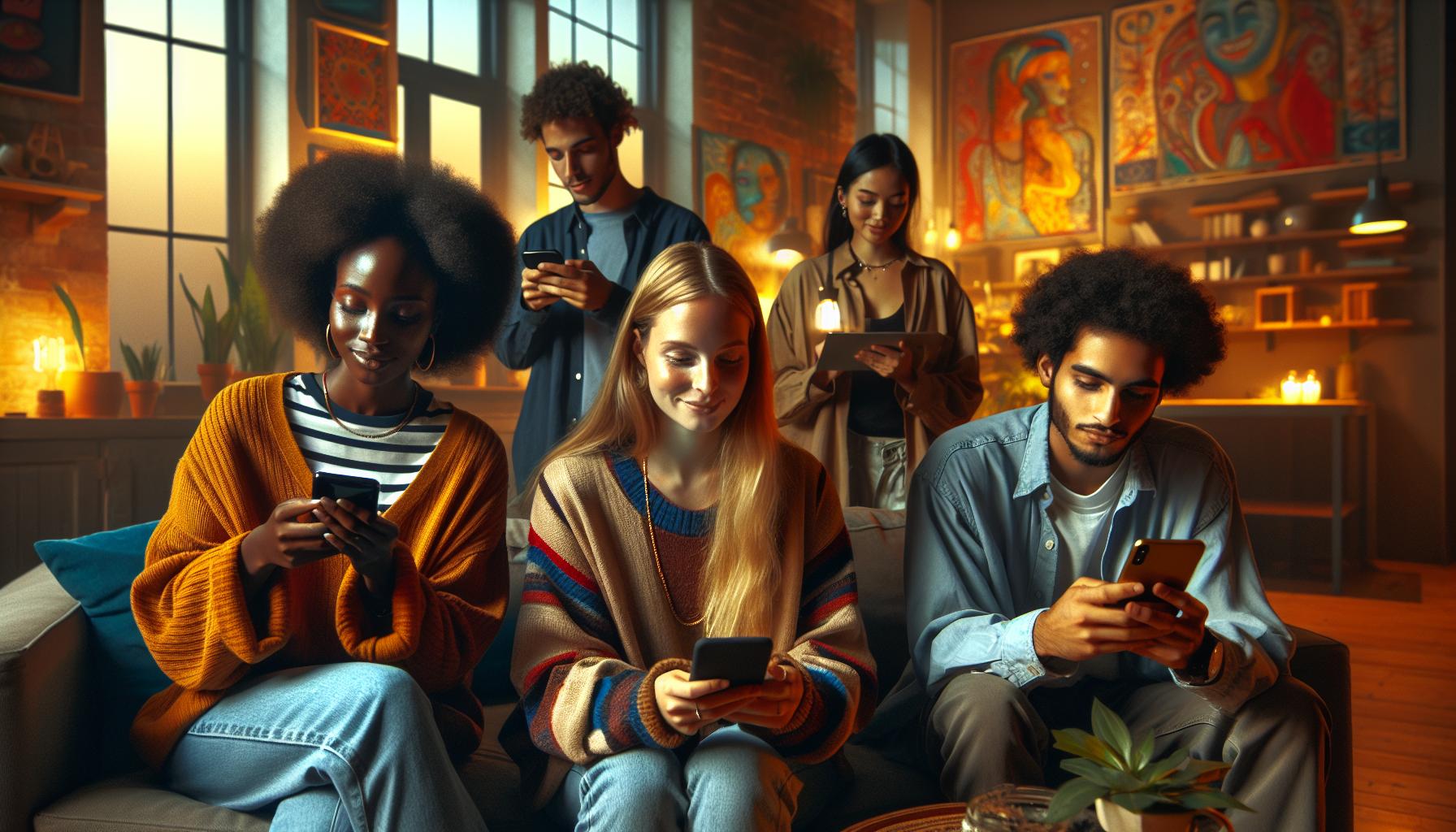In today’s hyper-connected world, social media has become an integral part of daily life. With platforms like Facebook, Instagram, and Twitter at their fingertips, many people find themselves scrolling through feeds and engaging with content for hours on end. But how much time should one really spend on social media each day?
Finding the right balance is crucial for mental well-being, productivity, and maintaining real-life relationships. As users navigate the digital landscape, understanding the impact of their social media habits becomes essential. This article explores recommended daily usage, the effects of excessive scrolling, and tips for a healthier online presence.
Key Takeaways
- Average Usage Recommendations: Adults should aim for 30-60 minutes of social media daily, while teens may limit their time to 1-2 hours for better mental health.
- Mental Health Awareness: Spending more than three hours on social media is linked to increased anxiety, depressive symptoms, and disrupted sleep patterns.
- Personal and Social Influences: Personal habits and social pressures significantly affect how much time individuals spend on social platforms, often leading to compulsive checking and longer engagement.
- Benefits of Limiting Time: Reducing social media usage can enhance mental well-being, improve focus, foster quality real-life connections, and provide more time for hobbies.
- Challenges in Reducing Usage: Addictive platform design, social pressures, fear of missing out (FOMO), and emotional attachments can make it difficult to cut down on social media time.
Understanding Social Media Usage
Social media usage varies significantly among different demographics. Research indicates that adults spend an average of 2.5 hours per day on social media platforms. In contrast, teenagers can average up to 4 hours daily, influenced by trends and peer interactions.
The frequency of platform use also matters. Users frequently check platforms like Instagram, Snapchat, and TikTok multiple times daily, often leading to fast consumption of content. This rapid interaction can contribute to feelings of anxiety and comparison.
Excessive social media exposure connects with negative experiences, such as decreased attention spans and disrupted sleep patterns. A study found that users who spend more than three hours per day on social media report poorer mental health outcomes.
Finding a balance is crucial. Experts recommend limiting social media usage to 30–60 minutes daily for better mental health and improved productivity.
Being mindful of time spent online enables users to engage more meaningfully while maintaining real-life relationships. This approach encourages self-reflection on the purpose of social media use, fostering healthier habits overall.
Recommended Daily Limits

Limiting daily social media use is crucial for maintaining a healthy balance in life. Guidelines adapt to different age groups and highlight the mental health implications connected to screen time.
Age Group Considerations
Various studies suggest distinct social media limits based on age.
- Children (under 13): Experts recommend less than 30 minutes daily, focusing on educational content.
- Teens (13-19): Suggested limits range from 1 to 2 hours to promote better mental and emotional health.
- Adults (20-64): Recommendations indicate a limit of 30 to 60 minutes per day, fostering a balance between online and offline activities.
- Seniors (65 and older): It’s advised to engage in 30 minutes to 1 hour daily, primarily for social connection.
Setting these boundaries helps age-specific users develop healthier online habits while minimizing adverse effects.
Mental Health Implications
Research links extensive social media use to various mental health challenges.
- Increased Anxiety: Users spending over three hours daily often experience heightened anxiety and feelings of inadequacy.
- Depressive Symptoms: Long-term engagement can contribute to depressive symptoms, especially in younger users.
- Sleep Disruption: Excessive use, particularly before bedtime, disrupts sleep patterns, leading to fatigue and diminished productivity.
- Attention Span Decrease: Extended scrolling correlates with shorter attention spans, affecting concentration in daily tasks.
Establishing recommended limits helps mitigate these mental health risks, encouraging users to maintain a balanced digital presence.
Factors Influencing Usage

Various factors significantly influence daily social media usage. Personal habits and social pressures play critical roles in determining how much time individuals spend on these platforms.
Personal Habits
Personal habits directly affect social media engagement. Users with established routines may spend more time on platforms during specific hours, such as mornings or evenings. Users engaged in content creation, such as influencers, often invest additional hours to curate posts. Frequent notifications and alerts can prompt compulsive checking, increasing overall usage. Additionally, users with a strong preference for visual content on platforms like Instagram and TikTok often exhibit longer engagement times compared to those who prefer text-based platforms.
Social Pressures
Social pressures can greatly impact social media usage patterns. Peer influence often drives users to stay connected with friends or trends, leading to increased time spent online. Users may feel compelled to engage frequently to maintain status or visibility within their social groups. Social validation, such as likes and comments, can create an addictive cycle that encourages continuous scrolling. Furthermore, exposure to curated lifestyles and achievements of others can heighten feelings of inadequacy, prompting users to spend even more time online to seek affirmation or connection.
Benefits of Limited Usage

Limited social media usage offers various advantages that enhance mental well-being and productivity.
- Improved Mental Health: Reducing time spent on platforms decreases feelings of anxiety and depression. Users engaging for 30-60 minutes daily report noticeably better mental health outcomes compared to those exceeding three hours.
- Enhanced Focus: Shortening social media interaction increases attention spans. Users focusing less on scrolling can dedicate more time to tasks requiring concentration, leading to improved work or study performance.
- Better Sleep Quality: Limiting social media use positively impacts sleep patterns by reducing blue light exposure before bedtime. Users who disconnect from devices earlier typically experience improved sleep quality and duration.
- Quality Real-Life Connections: Minimizing time online fosters deeper, more meaningful real-life interactions. Users spending less time on social media often prioritize face-to-face engagements, strengthening personal relationships.
- More Time for Hobbies: Cutting down social media usage frees up time for hobbies and other interests. Engaging in activities outside of screens promotes creativity and overall satisfaction in life.
- Less Social Comparison: Reducing exposure to curated lifestyles on social media diminishes feelings of inadequacy. Users focusing less on others’ highlights can cultivate a more positive self-image.
- Mindful Consumption: Limited use encourages more intentional interactions with content. Users can reflect on the quality and relevance of the content they consume, leading to a more fulfilling online experience.
Embracing limited social media usage leads to numerous benefits that foster a healthier balance between the digital and real world.
Challenges of Reducing Time
Reducing social media time poses several challenges. Users often encounter addictive behaviors due to the design of social media platforms, which encourage continuous scrolling and interaction. Notifications can draw users back in, creating a cycle hard to break.
Habitual checking of social media can be another barrier. Established routines, like checking platforms first thing in the morning or during breaks, reinforce the need for more engagement. Disrupting these habits requires conscious effort and consistent reminders.
Social pressure plays a significant role in social media use. The desire to stay updated or connected with peers can drive individuals to spend excessive time online. Comparisons with friends or influencers further intensify feelings of inadequacy, perpetuating the need for validation through continued use.
Fear of missing out (FOMO) remains a prevalent challenge. Many users worry about missing important updates or events, fueling compulsive behaviors. This mentality makes it difficult to step back from social media, despite understanding its negative effects.
Lastly, emotional attachment to online interactions can complicate the reduction effort. Users often form connections with friends and communities on these platforms, making it challenging to limit their presence without feeling isolated.
Addressing these challenges requires a multifaceted approach, including setting boundaries, seeking social support, and cultivating alternative activities that fulfill emotional and social needs.
Conclusion
Finding the right balance in social media usage is essential for maintaining mental health and fostering meaningful connections. By adhering to recommended time limits based on age groups, individuals can significantly reduce the negative impacts associated with excessive online engagement.
Embracing a mindful approach to social media not only enhances focus and sleep quality but also encourages deeper involvement in real-life activities and relationships. As users become more aware of their habits and set boundaries, they can create a healthier digital environment that supports overall well-being. Ultimately, prioritizing quality interactions over quantity can lead to a more fulfilling and balanced life.